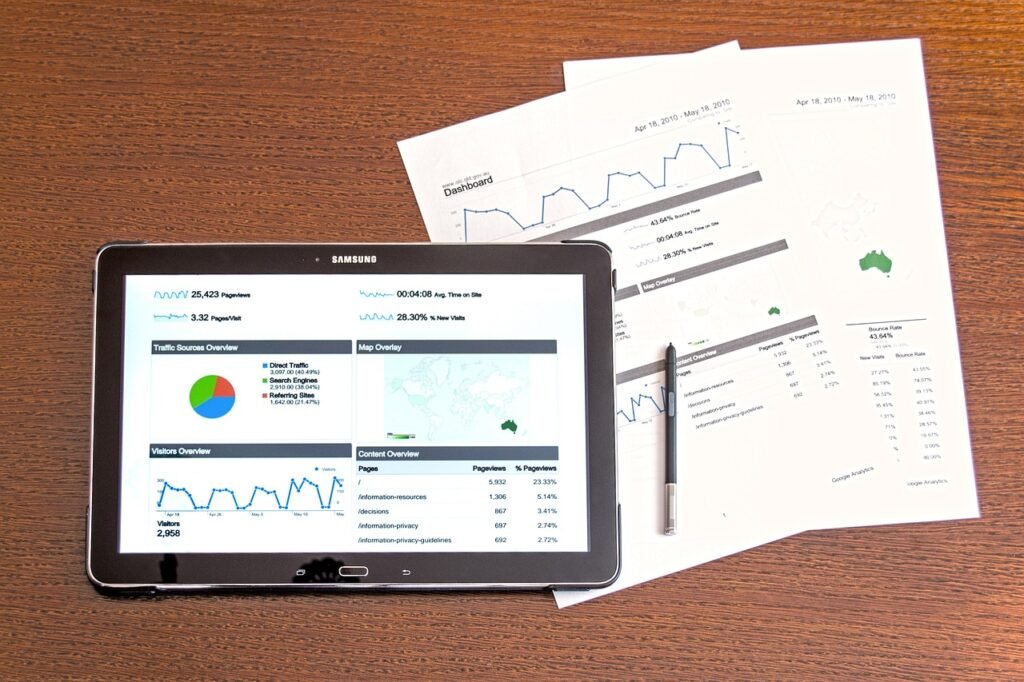Learn valuable strategies to optimize your Google Ads for more effective campaigns. Our comprehensive guide empowers digital marketers to maximize ROI and create impactful ads. Join the discussion and elevate your ad performance today!
Are you ready to unlock the full potential of your Google Ads campaigns? If you’re investing in ads but have yet to see the desired results, it’s time to reevaluate your strategy. Optimizing Google Ads is a robust tool for digital marketers, offering the potential to maximize your return on investment (ROI) and drive more effective campaigns.
This article will guide you through valuable steps and strategies to improve your Google Ads performance, empowering you to create more efficient and impactful campaigns. We encourage you to share your experiences or ask questions in the comments section below.
Understanding the Basics of Google Ads

Before delving into optimization techniques, it’s crucial to grasp the fundamentals of Google Ads. Imagine Google Ads as a digital billboard that empowers businesses to showcase their ads on Google’s search results pages (SERPs) and its network of partner websites.
These ads can be text, image, or video-based, tailored to reach specific audiences. Understanding these basics will equip you with the knowledge and confidence to navigate the world of Google Ads.
Critical Components of Google Ads
- Campaigns: The overarching structure for organizing ads, targeting settings, and budget.
- Ad Groups: Subcategories within campaigns that group similar ads and keywords.
- Keywords: Users type words or phrases into Google to trigger your ads.
- Ad Copy: The text or creatives that make up your ad.
- Bidding: The amount you will pay for each click or impression.
Knowing these components will help you navigate the optimization process more effectively.
Setting Clear Campaign Goals
Every successful Google Ads campaign starts with clear, measurable goals. With a defined objective, it’s easier to gauge success and make informed adjustments. Common goals include:
- Increasing website traffic
- Generating leads
- Boosting sales
- Building brand awareness
Align your campaign settings, ad copy, and keywords with these goals to create a cohesive strategy.
Conducting Keyword Research
Proper keywords are the backbone of any successful Google Ads campaign. Selecting the right keywords ensures your ads reach the right audience. Here’s how to conduct adequate keyword research:
Using Google Keyword Planner
Google Keyword Planner is an unrestricted tool that will help you discover new content keywords related to your business, estimate the searches they receive, and determine the cost of targeting them. You can access Google Keyword Planner by signing in to your Google Ads account and navigating to the ‘Tools & Settings’ menu.
Analyzing Competitors
Check what seed words your competitors are bidding on. Tools like SEMrush and Ahrefs can provide insights into competitor keywords and ad copy.
Long-Tail Keywords
While broad keywords might have higher search volumes, long-tail keywords often have little or no competition and higher conversion rates. Users might search for more specific phrases, such as “affordable running shoes for women.”
Crafting Compelling Ad Copy

Your ad copy is your foremost impression on probable customers. It must be compelling, clear, and relevant to entice users to click. Here’s how to craft persuasive ad copy:
Highlighting Unique Selling Points (USPs)
What makes your product or service stand out? Emphasize your USPs in your ad copy to attract attention.
Using Emotional Triggers
To motivate users to act quickly, incorporate emotional triggers like urgency, scarcity, or fear of missing out (FOMO).
Clear Call-to-Actions (CTAs)
A strong CTA tells users precisely what you want them to do, whether it’s “Buy Now,” “Sign Up Today,” or “Learn More.”
Utilizing Ad Extensions
Ad extensions provide extra information and can increase your ad’s visibility and click-through rate (CTR). Here are some essential ad extensions:
Sitelink Extensions
These extensions allow you to add links to your ad, sending users to specific pages on your website.
Call Extensions
With the call extensions, you can add a mobile number to your ad, making it easy for mobile users to call your business directly.
Location Extensions
Your ad should show your business address, phone number, and a map marker, which is helpful for local businesses.
Leveraging Audience Targeting
Reaching the right audience is not just a strategy, but a crucial element for the success of your campaigns. Google Ads offers several audience targeting options, empowering you to focus your efforts on the most relevant and potential customers.
Demographic Targeting
Target users are identified based on age, gender, parental status, or household income.
Interest Targeting
Reach users, such as sports enthusiasts or tech lovers, based on their interests and habits.
Remarketing
Remarketing in Google Ads allows you to show ads to people who have once visited your website or used your app, reminding them to return and complete a purchase.
Implementing Smart Bidding Strategies
Intelligent bidding strategies use machine learning to optimize your bids automatically. Implementing Smart Bidding Strategies helps you reach your goals more efficiently. Here are some popular intelligent bidding strategies, explained in simple terms:
Target Cost Per Acquisition, also shortened as CPA, is a bidding technique that sets bids to help get as many conversions as possible at your target CPA. This means that Google Ads will automatically adjust your bids to get the best conversions within your specified cost per acquisition. Then, sets bids to help you get as many conversions possible at your target CPA.
Target ROAS (Return on Ad Spend)
Sets bids to help get as much conversion value as possible at your target ROAS.
Maximize Conversions
Automatically sets bids to assist you in getting the most conversions within your budget.
Creating Effective Landing Pages
When your ad is clicked, they are directed to your landing page, which is crucial to converting those clicks into actual customers. A well-designed landing page is critical in enticing visitors to take the intended action, whether purchasing, signing up for a newsletter, or requesting more information. The landing page should effectively communicate your message, offer a clear call-to-action, and provide a seamless user experience to encourage conversion.
Consistent Messaging
Confirm the message on your landing page matches the ad copy to avoid confusion and increase trust.
Clear CTAs
Like your ad copy, your landing page should have a strong, clear call to action that guides the user to the desired action.
Mobile Optimization
Confirm your landing page is mobile-friendly, as many users will access it from their phones. If you don’t have the resources to create a different mobile version of your landing page, consider using responsive design to ensure your page adapts to various screen sizes.
Monitoring and Analyzing Campaign Performance

Continuous monitoring and analysis are vital for comprehending your campaigns’ performance and where improvements are needed. One common challenge is interpreting the data. It’s important to understand what each metric means and how it relates to your campaign goals.
Key Metrics to Track
- Click-Through Rate (CTR)
- Conversion Rate
- Cost Per Click (CPC)
- Cost Per Acquisition (CPA)
- Return on Ad Spend (ROAS)
Using Google Analytics
Integrate Google Analytics with your Google Ads account to get a clearer insight into user behavior and campaign performance.
Optimizing for Mobile Devices
With most users accessing ads from their mobile devices, optimizing your campaigns for mobile is essential.
Mobile-Specific Ad Copy
Create ad copy that is short, concise, and tailored for mobile users.
Mobile Bidding Adjustments
Adjust your bids based on device performance, allocating more budget to mobile if it drives better results.
A/B Testing Your Ads
A/B testing involves creating separate versions of your ads to see which performs better. A/B or split testing can help refine your ad copy and strategy.
Elements to Test
- Headlines
- Descriptions
- CTAs
- Images or Videos
Analyzing Results
Look at performance metrics to determine which version of your ad is more effective and why.
Adjusting Your Budget for Maximum Impact
Wisely allocating your budget can significantly impact your campaign’s success.
Budget Allocation Strategies
- Focus on High-Performing Keywords: Allocate more budget to keywords that drive the most conversions.
- Time-Based Budgeting: Increase your budget during peak times when your audience is most active.
Using Negative Keywords to Refine Targeting
Negative keywords hinder your ads from appearing for irrelevant searches, saving money and improving your CTR.
Identifying Negative Keywords
Regularly check your search terms report to identify nonessential searches and add them as negative keywords.
Benefits of Negative Keywords
- Improved CTR
- Reduced Wasted Spend
- Better Targeting
Staying Updated with Google Ads Features
Google Ads is constantly changing with newer features and updates. Staying updated will help you take on the latest tools and strategies.
Following Industry Blogs and News
Stay updated by following blogs like Google Ads Blog, Search Engine Land, and Industry Influencers.
Participating in Webinars and Training
Google provides webinars and training sessions to help advertisers learn about new features and best practices.
Conclusion
Optimizing Google Ads for more effective campaigns requires a combination of clear goals, strategic planning, and continuous monitoring. You can significantly enhance your campaign performance by understanding the basics, conducting thorough research, crafting compelling ads, and leveraging advanced targeting and bidding strategies.
FAQs
1. How often should I review my Google Ads campaigns?
You should review your campaigns at least once weekly to monitor performance and make necessary adjustments. What is a good CTR for Google Ads?
A good CTR varies by industry, but a general benchmark is around 2-5%. Higher CTRs indicate more relevant and compelling ads.
2. How can I reduce my cost per click (CPC) in Google Ads?
To reduce CPC, improve your Quality Score by creating relevant ads, selecting targeted keywords, and optimizing your landing pages.
3. How important is Quality Score in Google Ads?
Quality Score impacts your ad rankings and CPC. Higher Quality Scores lead to better ad positions and lower costs.
4. Can I run Google Ads on a limited budget?
You can run effective Google Ads campaigns on a limited budget by focusing on highly targeted keywords, optimizing your bids, and using negative keywords to avoid wasted spend.
5. How can I measure the success of my Google Ads campaigns?
Empower yourself by measuring the success of your Google Ads campaigns by tracking KPIs such as CTR, conversion rate, cost per conversion, and ROAS. By utilizing Google Analytics, you can gain valuable insights into user interaction on your site after clicking on your ads, putting you in control of your campaign’s success.
6. What are some common mistakes to avoid when optimizing Google Ads campaigns?
Common mistakes to avoid when optimizing Google Ads campaigns include:
- Neglecting negative keywords.
- Not conducting thorough keyword research.
- Ignoring ad performance data.
- Failing to test different ad variations.
Additionally, aligning ad copy and landing pages (e.g., if your ad promises a discount but the landing page doesn’t reflect that) or having a poorly structured campaign can help performance. This is because a misconfiguration between the ad and the landing page can skyrocket bounce and low conversion rates, negatively affecting your campaign’s performance.
7. How often should I review and adjust my Google Ads campaigns?
Take charge of your Google Ads campaigns by regularly reviewing and adjusting them based on performance data. Depending on your campaign’s size and objectives, weekly or bi-weekly reviews are beneficial. This proactive approach allows you to optimize timely and ensure your campaigns align with your goals, putting you in the driver’s seat of your campaign’s success.
8. What are some cost-effective ways to optimize Google Ads campaigns?
To optimize Google Ads campaigns cost-effectively, focus on improving Quality Score (a metric that Google uses to determine the relevance and quality of your ads and keywords, which can affect your ad position and cost per click), utilizing ad scheduling to target specific time frames, optimizing landing pages for better relevance, and implementing ad extensions strategically. Additionally, regularly refining your keyword list and monitoring search terms can help reduce unnecessary ad spend.










